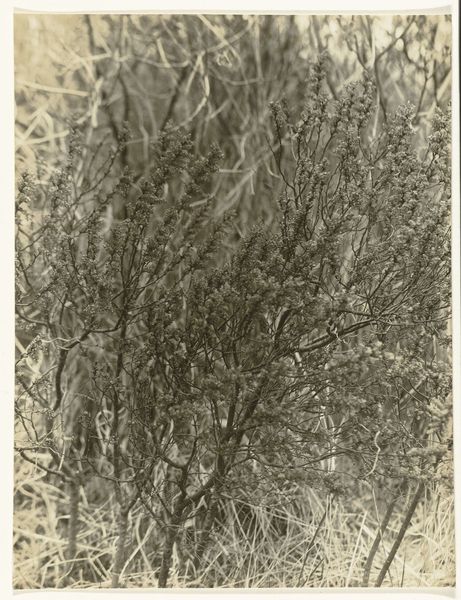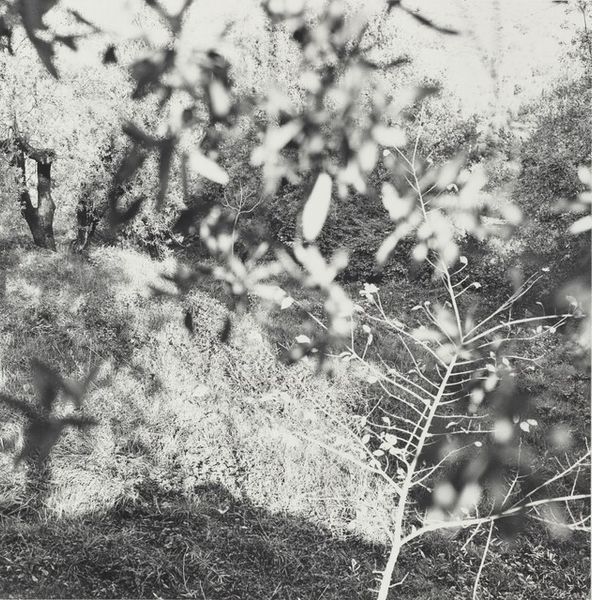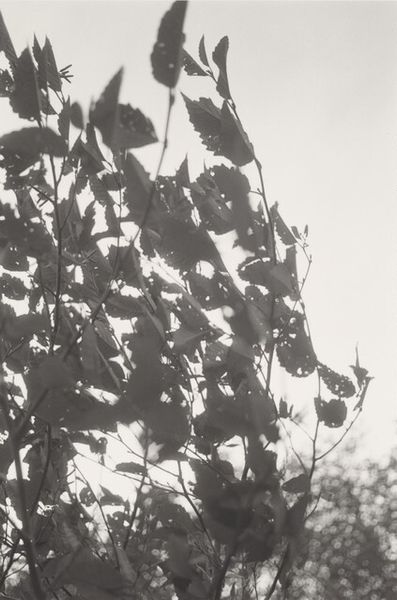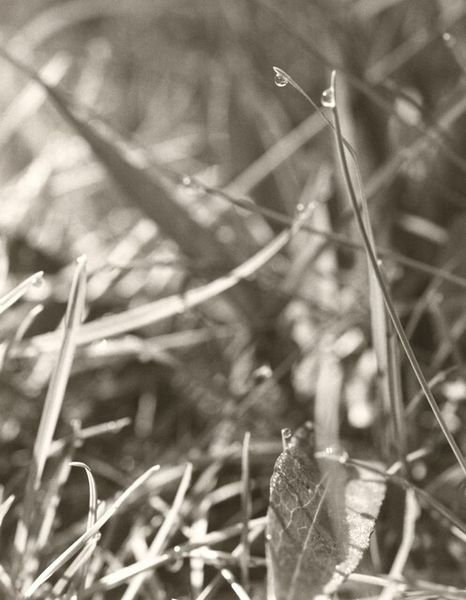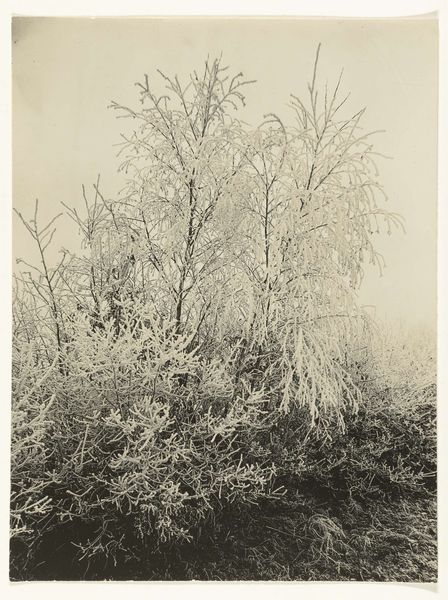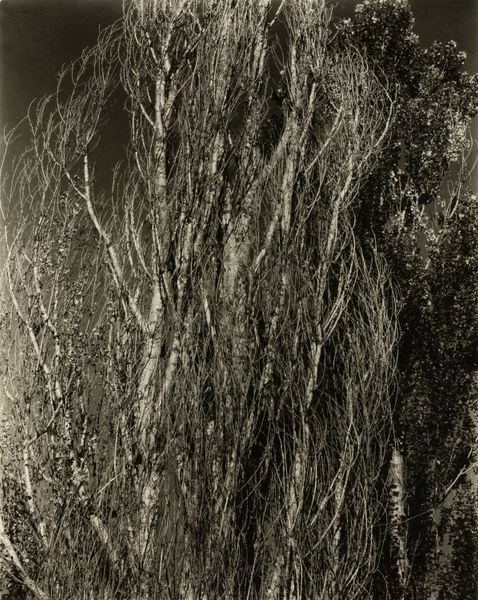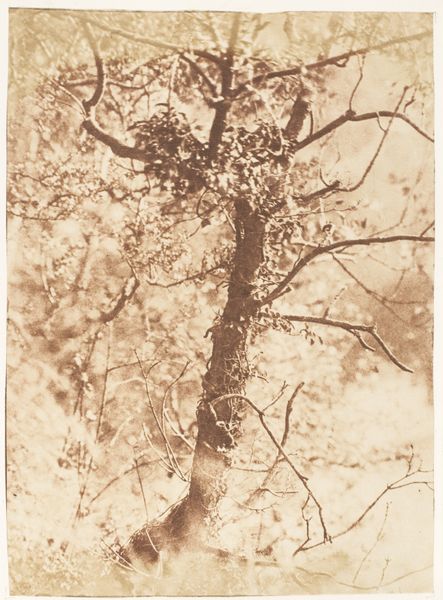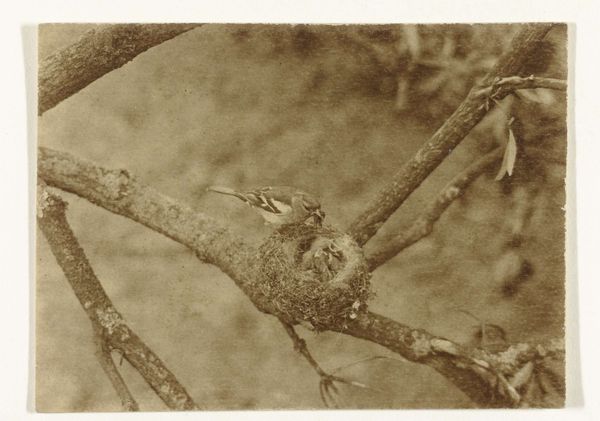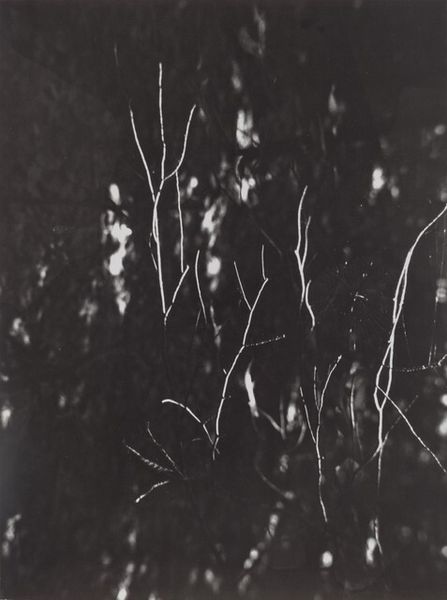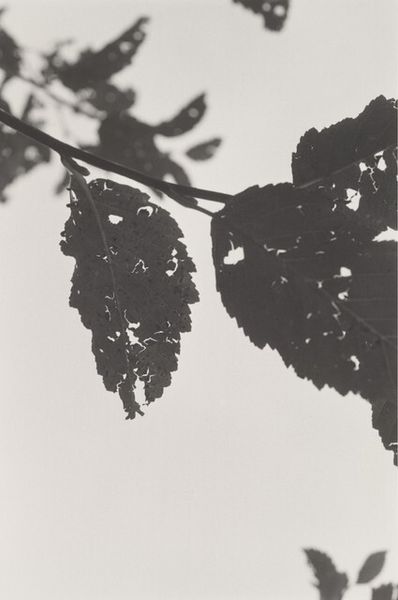
photography
#
landscape
#
nature
#
photography
#
nature
#
realism
Dimensions: height 167 mm, width 114 mm
Copyright: Rijks Museum: Open Domain
Editor: This is a photograph, "Vink voert nest in perenboom," or "Chaffinch feeding nest in pear tree," by Richard Tepe, dating from around 1900 to 1940. I’m really struck by the composition – how the delicate nest is cradled by the branches. What stands out to you in this work? Curator: The immediate impression is the iconography of nurture and dependency. We have the mother bird, the provider, almost a Madonna figure of the avian world, feeding her young. Look closely at the texture – the rough bark against the soft down of the nestlings. This creates a powerful visual contrast between protection and vulnerability. Editor: So, it’s not just a picture of birds, it represents something more universal? Curator: Exactly. Birds and nests have been potent symbols across cultures for centuries. They often signify home, family, and the cycle of life. Consider how the pear tree itself is also symbolic – representing prosperity, longevity, and even, in some traditions, immortality. Does the act of providing food for her children resonate with a human emotion? Editor: Absolutely. It’s almost primal – that drive to protect and care for your offspring. I hadn't thought about the pear tree adding to that. Curator: And how the light catches the fuzz around the nest, like a halo… Tepe uses this natural, photographic realism to hint at deeper, almost sacred concepts of care and the continuation of life, all nestled within the safety of home. Editor: I see that now. The interplay between nature and this kind of universal symbolism makes it so much richer. Curator: Indeed. The cultural memory embedded within these seemingly simple images can unlock surprising emotional depths. Thank you for your insight and keen observation.
Comments
No comments
Be the first to comment and join the conversation on the ultimate creative platform.
